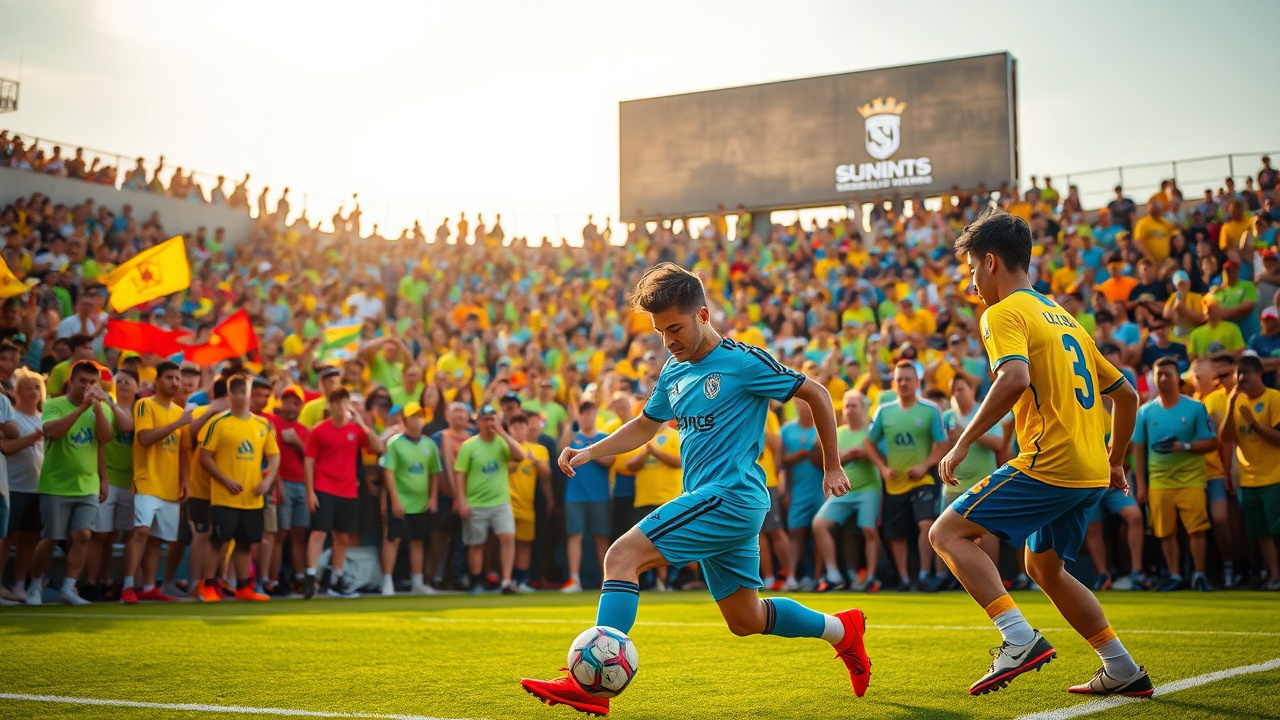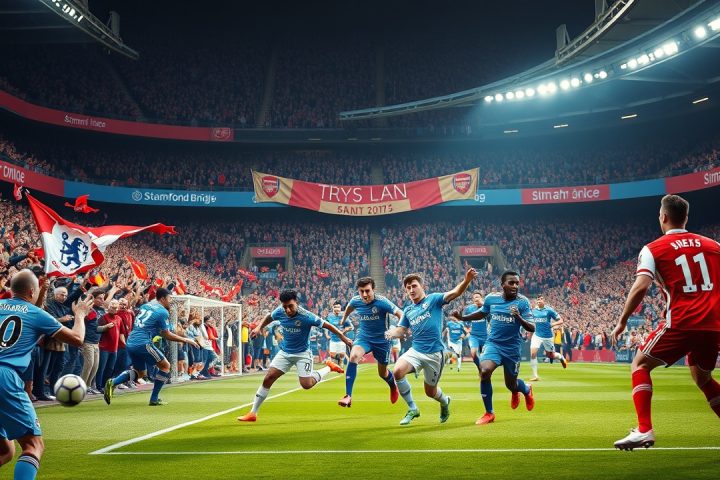Revitalizing Football through Alternative Leagues
Under the vibrant lights of London’s Copper Box Arena, former Manchester United player Josh Harrop found himself stepping into an unconventional football experience, reminiscent more of a music festival than a football ground. The atmosphere buzzed with energy as an airhorn signaled the start of a game, with social media influencers capturing every moment from the sidelines. Having recently become a free agent and only briefly familiarizing himself with the Baller League rules before joining, Harrop soon realized this league was a far cry from the Premier League he once knew.
“The moment the game kicked off, I thought, ‘Wow, this is wild! It’s complete chaos!'”
Harrop recounted to ESPN, having now found his footing and adjusted to the league’s eccentricities after scoring during the inaugural match for his team, FC Rules the World.
The Baller League and Its Unprecedented Appeal
The Baller League, which features a star-studded lineup of managers such as Portuguese football legend Luis Figo, British rapper Dave, and England’s Chloe Kelly, is part of a growing phenomenon in the football world, with numerous alternative soccer competitions cropping up recently. This league is a derivative of the acclaimed Kings and Queens Leagues founded by football icon Gerard Pique, as these new leagues strive to energize the sport’s image while attracting a younger audience who favor *quick*, *engaging content* over traditional formats.
Upcoming tournaments like The Soccer Tournament (TST), boasting a $1 million prize for the winner, also exemplify this shift, pushing boundaries with unique rules and a 7-v-7 player format. The competition is eager to entice younger viewers through *innovative gameplay* and *viral potential*, leading fans to question the viability and future of these alternative formats versus traditional soccer. Engaging younger fans—the lifeblood of modern sports—these tournaments are seen as offering a *playful divergence* from the more serious tone of established events.
Vision for the Future of Soccer
The organizers of these leagues share a unified vision: complement traditional soccer rather than vying to replace it. They aim to provide engaging alternatives for content-hungry younger fans, especially Gen Z, who increasingly consume sports through *fast, mobile-friendly clips*. This shift from conventional broadcasts to social media-centric productions reflects a broader trend in sports, as executives seek to captivate audiences who may overlook standard matches characterized by *lower scoring* and *frequent draws*.
In a similar vein, the newly launched World Sevens Football—a seven-a-side competition with eight professional clubs—offers an enticing $5 million prize pool. This format not only aims to draw the attention of younger fans with its *dynamic style* but also creates *memorable, shareable moments* intended to stimulate the growth of women’s soccer.
Participants in these alternative leagues range from retired professionals to individuals with aspirations of making a mark in football. The TST, for instance, will showcase a mix that includes familiar names but also lesser-known players still striving for recognition. This format offers new hope for many who have not reached the heights of modern football stardom. Founders emphasize inclusivity, stating that it’s crucial to highlight a spectrum of talent rather than solely focusing on elite clubs.
Changing Engagement with Young Fans
Harrop’s journey through the Baller League illustrates this new landscape, where younger fans, previously indifferent to lower-tier football, now embrace these leagues with enthusiasm. His coach, Eva Kray Batousol, has observed a marked change in how young fans engage with players in the league.
“Now, you see kids proudly sporting Baller League jerseys alongside their favorite Premier League stars,”
Batousol noted. This reveals a potential pathway for aspiring players who might have thought their dreams ended in non-league football.
Across the Atlantic, the excitement resonates as American players join the Queens League Americas, where they savor the opportunity to compete in sold-out stadiums and attract significant digital viewership, demonstrating the power of social media in spreading awareness and engagement. As these tournaments rise in popularity, they introduce more vibrant prize money and viral moments, fostering a new generation of soccer fans.
Looking Ahead: The Future of Soccer
Despite skepticism from traditionalists—like La Liga president Javier Tebas, who denigrated the Kings League as a mere spectacle—there’s recognition that these innovations can enhance the football ecosystem, attracting fresh audiences. Harrop himself acknowledges the importance of keeping the sport exciting and filled with authentic personalities, something often lost in traditional league formats. He mentions the *sterility* of standard post-match interviews compared to the *liveliness* of newer leagues, suggesting that the evolution of soccer could very well be ignited by these fledgling competitions.
In the end, as teams like La Bombonera emerge victorious within these new formats, and as players like Harrop begin to make names for themselves through *viral moments*, the question lingers: could these alternative leagues carve out a vital niche in the future landscape of soccer? While traditional forms aren’t going anywhere, they may find themselves influenced by the more irreverent, engaging spirit that these new competitions embody.




